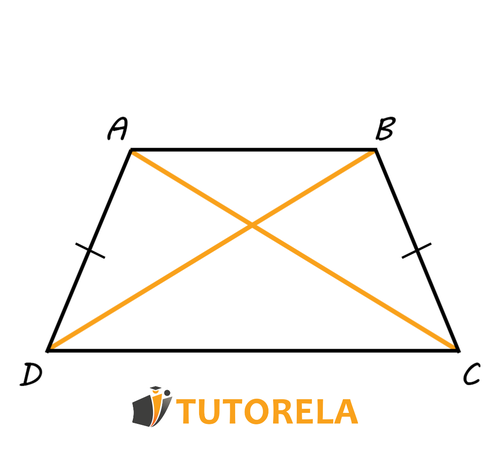Let's closely examine the properties of an isosceles trapezoid to determine the relationship between its opposite angles.
An isosceles trapezoid is a type of trapezoid where the non-parallel sides (legs) are of equal length. It also implies that the angles adjacent to each leg are equal, due to the symmetry of the trapezoid. However, the most crucial aspect for this problem involves understanding the sum of angles in a trapezoid and their specific relationships.
Consider an isosceles trapezoid, ABCD, with base AB parallel to base CD, and legs AD and BC being equal.
- The key property in any trapezoid is that each pair of angles on the same side of one of the non-parallel sides (AD or BC) are supplementary. That is, angles ∠DAB and ∠ABC together sum to 180∘ since they are co-interior angles formed by a transversal cutting the parallel lines AB and CD.
- Similarly, angles ∠BCD and ∠CDA also sum to 180∘.
In addition, the total sum of the interior angles of any quadrilateral (and thus any trapezoid) is 360∘. Therefore, opposite angles ∠DAB and ∠BCD (first set) sum to 180∘, and similarly, opposite angles ∠ABC and ∠CDA (second set) also sum to 180∘. Therefore, the sum of the opposite angles in an isosceles trapezoid is always 180∘.
Thus, through application of the properties of parallel lines and angle sums, we find that the sum of opposite angles in an isosceles trapezoid is indeed always 180∘.
The correct conclusion of this problem is that the statement is True.
The sum of the opposite angles in an isosceles trapezoid is always 180∘.



